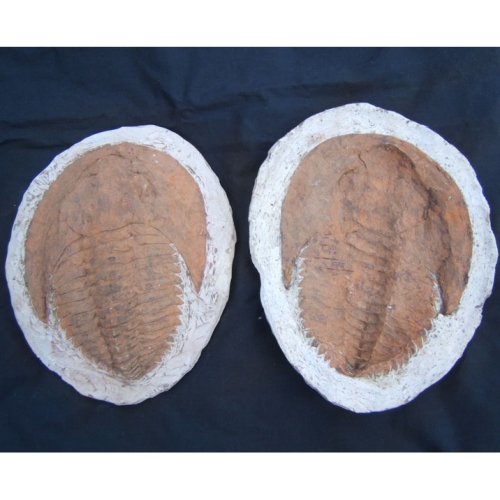- “Bringing The Past, Into the Future”
- +44 (0) 1204 388754

PRODUCTS BY WEIGHT
BOX SETS
PLASTIC DISPLAY PRODUCTS
PRODUCTS BY WEIGHT
BOX SETS
PLASTIC DISPLAY PRODUCTS
Step into the ancient world of Trilobites with our extraordinary collection. These captivating fossils offer a mesmerizing glimpse into the diverse and ancient world of marine life. Preserved through the ages as fossils, our Trilobites collection showcases the remarkable beauty, intricate details, and rich paleontological significance of these enchanting creatures.
Experience the allure of Trilobites with our meticulously curated collection. Whether you are a paleontologist, a fossil enthusiast, or simply intrigued by the wonders of ancient life, our specimens offer a window into the diverse and captivating world of these ancient marine creatures.
Explore our selection today and witness the beauty and paleontological significance of Trilobite fossils. Each specimen has been carefully chosen to showcase the unique charm and scientific importance of these extraordinary relics of Earth’s ancient history.
Cambropallas Telesto postive and negative Trilobite specimens. Found in Jbel Wawrmast Formation, Morocco. The specimens are middle Cambrian in age and are roughly 21cm in length and 14cm wide approx. Well prepared genuine, natural Cambrian Trilobite embedded on matrix.
Out of stock
Out of stock
• Geological Age: Devonian Period, around 395-345 million years ago.
• Location: Hamar Laghdad Formation, Djebel Issoumour, Alnif, Morocco.
• Family: Trilobite
• Species: Crotalus cephallus
Crotalus cephallus fossil trilobite specimen which lived during the Devonian period, making it over 300 million years old, the sample was found in the Hamar Laghdad limestone Formation in Alnif, Morocco. Measuring over 20 mm in length, professionally prepped, the individual segments of the thorax, tail spines and glabella and eyes are all clearly visible on this fantastic specimen.
Geological Time: Middle Cambrian, Wheelers Shale Formation.
Fossil Location: Millard County, Utah. USA
These specimens are approx 1″ in size and come supplied in a 1.5″x1.5″ mag box with x4 magnification.
Out of stock
Flexycalymene trilobite fossils, (syn: diacalymene) are a well known extinct species which lived during the Ordovician period, 449 to 443 million years ago and were found in Erfoud, Morocco. These samples exhibit quite clear morphological features such as the pygidium, cephalon and thorax as well as the shape and segments as expected. They appear to have a rusty, limonotic colouration which is due to iron oxide staining in the beds the fossils were found in. Available in various sizes and come supplied in a tray with a label.
Metacanthina fossil Trilobite Specimens, roughly 3″ long and are imbedded in matrix. The specimens show clear features such as eyes and segments and are supplied in a white card tray with a label. All are high quality specimens at an excellent price perfect for collectors and teachers alike.
17 in stock
Ogyginus comdensis was a species of asaphid trilobites from the Ordovician period, and found in abundance in Wales. They were characterised by their squat, rounded bodies. These specimens are preserved within a mud stone matrix, some of which has been polished, but all of which has been cut to display the fossils in their entirety. A perfect specimen for analysis of different orders of trilobite if purchased along side a more common variation, these fossils could also be used as a display piece. All fossils are provided with a white card tray and information label.
Available in the folowing sizes:
These sizes refer to the length of the trilobite, not the matrix they are contained in. Matrix size varies between specimens.
Ogyginus sp fossil pygidiums from the Llanvirn series during the middle of the Ordovician period, the samples come from mid Wales in the UK and are preserved on a fine grained solid mudstone matrix. The pygidiums (tail) are available and it is believed that this is due to moulting behaviour of the animal in which it anchored its tail to the sea floor to moult its old carapace, during the process. The samples are well preserved and range between 15 t0 20 mm in size and increasingly more difficult to come by. They are ideal for both collectors and enthusiasts but also ideal for educational use to describe the animals behaviour in life, each samples will come supplied in a white card tray with an information label.
One of the largest known species of Trilobites, from the Moroccan Sahara. Paradoxides are found in western Europe and America. The body shows clear segmentation and other morphological features such as genal spines. The species is one the largest to have lived with some specimen known to reach almost half a meter in size.These specimens also include a free stand to display it on.
We have several hundred of these small enrolled Phacops. Specimens are available in two sizes, approximately 2 cm and approximately 3 cm. The morphology of these specimens is excellent as minute details can be clearly seen, especially when viewed under a hand lens.
Family: Trilobite.
Species: Phacops Latifrons.
Geological Age: Couvinian, middle Devonian period, 380 to 360 million years ago.
Location: Vireux-Molhain, France.
Out of stock
Family: Trilobite.
Species: Phacops rana milleri
Geological Age: Silica shale formation, Devonian, 419 to 350 million years ago.
Location: State of Ohio, USA.
Out of stock
Out of stock
Great specimens of the specie of Trilobite, Proetus. Specimens are on matrix, with most being out stretched, while few appear enrolled. The specimens have been intricately prepped to show full morphological features with out damage to the actual specimen its self, and still at a great price.
Out of stock